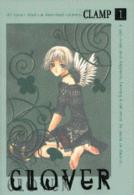Full Description
In France, comics are commonly referred to as the "ninth art". What does it mean to see comics as art? This book looks at the singular status of comics in the French cultural landscape. Bandes dessinées have long been published in French newspapers and magazines. In the early 1960s, a new standard format emerged: large hardback books, called albums. Albums played a key role in the emergence of the ninth art and its acceptance among other forms of literary narrative. From Barbarella in 1964 to La Ballade de la mer salée in 1975, from Astérix and its million copies to Tintin and its screen versions, within the space of just a few years the comics landscape underwent a deep transformation.
The album opened up new ways of creating, distributing, and reading bandes dessinées. This shift upended the market, transformed readership, initiated new transmedia adaptations, generated critical discourse, and gave birth to new kinds of comics fandom. These transformations are analysed through a series of case studies, each focusing on a noteworthy album. By retracing the publishing and critical history of these classic bandes dessinées, this book questions the blind spots of a canon based on the album format and uncovers the legitimisation processes that turned bande dessinée into the ninth art.
Contents
1. Introduction.- 2. Barbarella: Inventing comics for adults (1964-1968).- 3. Flash Gordon and the transatlantic construction of a ninth art heritage (1968).- 4. Astérix and the million-copies comics industry (1966).- 5. Sharks, pirates, and ghosts. Authorship and the challenge of transmedia storytelling (Tintin et le lac aux requins, 1973).- 6. Alternative comics publishing: Futuropolis and the artification of comics publishing.- 7. The author as publisher: Claire Bretécher, Les Frustrés, 1975.- 8. Casterman and the birth of the French-language graphic novel.- 9. Conclusion.








